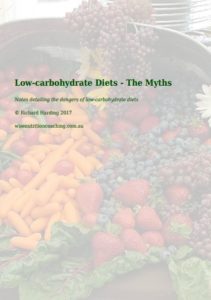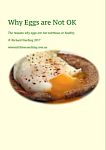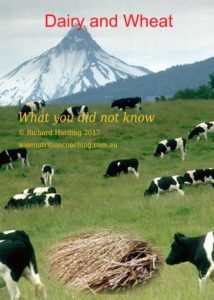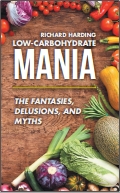The Traditional Diet of Inuit (or Eskimo) Peoples
The traditional diet of the Inuit people was first examined comprehensively by Vilhjalmur Stefansson in 1906. He visited the Copper Inuits during a number of expeditions. Their diet was virtually plant-free, dominated by seal and caribou meat, supplemented by large salmon-like fish and occasional whale meat. Stefansson found that cooking was the nightly norm.
Teicholz claims that the Inuit is an example of a healthy population that thrive on a high fat diet.
Inuit are far from being a healthy population.
Mummified remains show that they suffered from osteoporosis, kidney disease, atherosclerosis, spina bifida, streptococcal infections, cribia orbitalia (sieve-like lesions in cavities of skull), iron deficiences, porotic hypersotosis (spongy bones). 1
Spina bifida is a severe defect where a newborn baby has part of the spinal chord exposed because of damage to the backbone.
Some mummies, including those of children, show evidence of death by starvation.
Note that parasitic infections lower blood cholesterol.
Toxoplasma gondii evolved in the Amazon region of South America. It arrived in the polar regions in the 1980s.
The prevalence of Toxoplasma has been recorded at 8% in Nunatsiavut (far north region of Newfoundland and Labrador), 28% in Nunavut (province west of Hudson Bay) and 60% in Nunavik (province east of Hudson Bay).
Toxoplasma is associated with the consuption of raw meat and organic meats. Most people infected do not develop symptoms. It may cause flu-like symptoms. For infants born to infected mothers and for people with weakened immune systems, toxoplasmosis can cause serious complications. It can affect the baby’s eyesight and hearing and cause stillbirth. 2
Teicholz describes the experience of Vilhjalmur Stefansson who lived in the Artic with the Inuit in the early 1900s.
Stefansson found that cooking was the nightly norm.
According to Stefansson,
Teicholz misrepresents the diet of the Inuit that Stefansson lived with.
Every wife was expected to have a substantial cooked meal ready for her husband when he returned from the hunt. During summer, the time of the husband’s return could not predicted. Anthropologist Diamond Jenness who accompanied Stefansson wrote:
Stefansson wote in 1910,
Since it was impossible to cook food during a hunt because of lack of fuel and time, the hunters would sometimes eat fresh fish raw, either the flesh or in the case of large fish, just the intestines. Hunters also made caches of excess fish, which they could recover later for a cold meal. These uncooked foods were affected after being stored with foods that were already in partially rotten. Most people liked the strong taste. Jenness saw “a man take a bone from rotten caribou meat cached more than a year before, crack it open and eat the marrow with evident relish although it swarmed with maggots.” 3
Stefansson’s hosts were horrified to hear of a distant group, the Puiplirmiut, who supposedly collected frozen deer droppings off the snow and ate them like berries. They said that was a truly repulsive habit, and anyway it was a waste of a good dropping. Those pellets were a fine food, they said, when boiled and used to thicken blood soup. The only vegetable food that was regularly eaten raw was the lichen eaten by caribou, which the Copper Inuit ate when the lichen was partially digested. In summer they would take it directly from the rumen and eat it while cutting up the carcass. As the cold closed in during the fall, they were more likely to allow the full stomach to freeze intact with the lichens inside. They would then cut it into slices for a frozen treat.
These diets are not easily transferable to modern Western societies.
In 1928, Stefansson and his colleague Karsten Anderson spent one year at Bellevue Hospital in New York, eating nothing but meat and drinking water. This experiment was funded partly by Institute of American Meat Packers.
According to Teicholz,
However, McCellan and Bois, who reported on the study in 1929 found that,
However, the researchers, sponsored by the meat industry, reported “no ill-effects”.
In 1823, Father Ioann Veniaminov moved to the island of Unalaska in the Aleutian Islands of Alaska. His parish included the island of Unalaska and the neighboring groups of Fox and Pribilof islands. He was proficient in six local dialects. 5
In 1834, Father Ioann was transferred to Sitka Island, to the town of Novoarkhangelsk which was later renamed Sitka. He devoted himself to the Tlingit people and studied their language and customs. Stika Island is off the coast of southern Alaska, south of Juneau.
This local population were not yet influenced by European dietary customs. According to Veniaminov, “excluding infant mortality, about 25% of their population lived past 60”.
This is not an endorsement of the traditional Inuit diet.Last updated on Thursday 16 March 2023 at 23:44 by administrators
Footnotes
- Bishop, K. (2011). Thule palaeopathology: The health concerns of an arctic lifestyle. Totem: The University of Western Ontario Journal of Anthropology, 19(1), 4.
- Reiling, S., & Dixon, B. (2019). Toxoplasma gondii: How an Amazonian parasite became an Inuit health issue. Canada Communicable Disease Report, 45(7/8), 183–190.
- Wrangham, R. (2008). Catching Fire: How Cooking Made Us Human. Basic Books.
- McClellan, W. S., & Bois, F. D. (1929). Prolonged Meat Diets with a Study Function and Ketosis. Clinical Calorimetry.
- Innocent of Alaska—Wikipedia. (2022, January 25).





